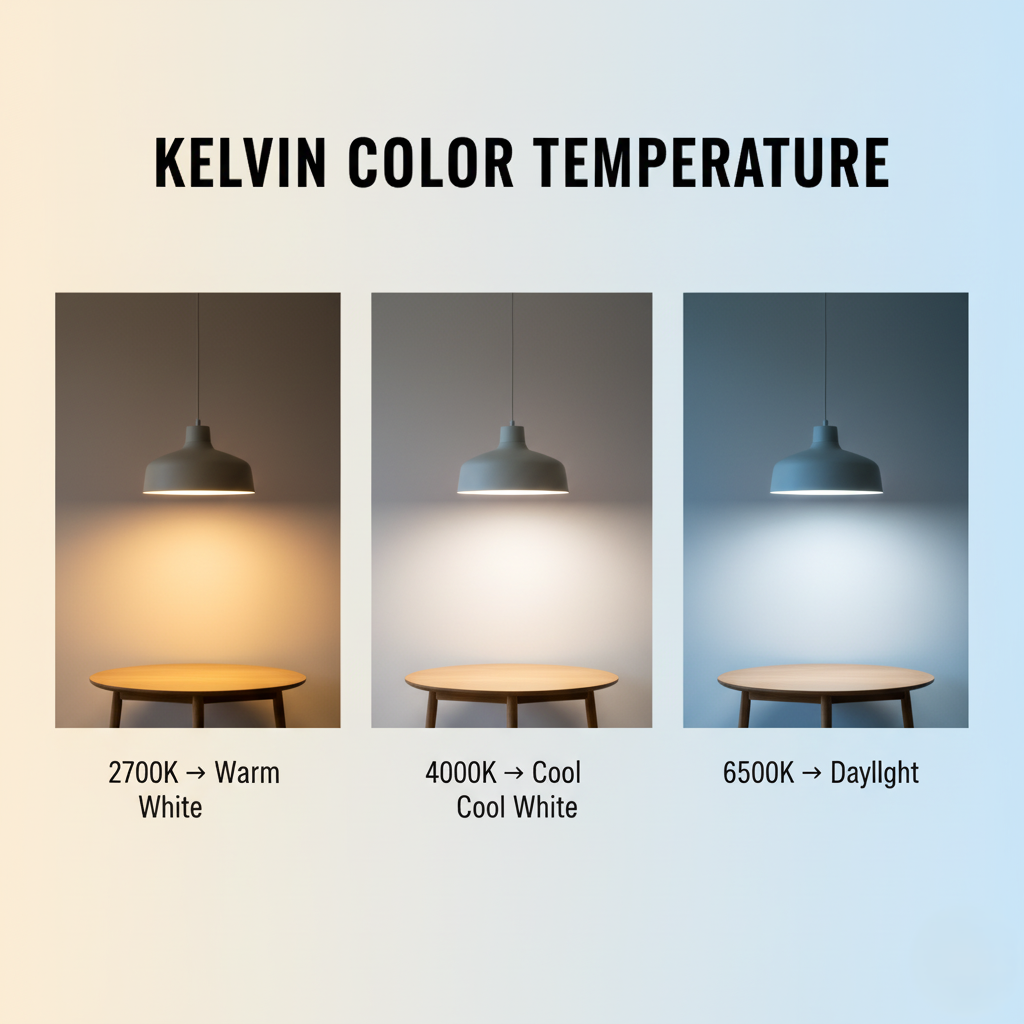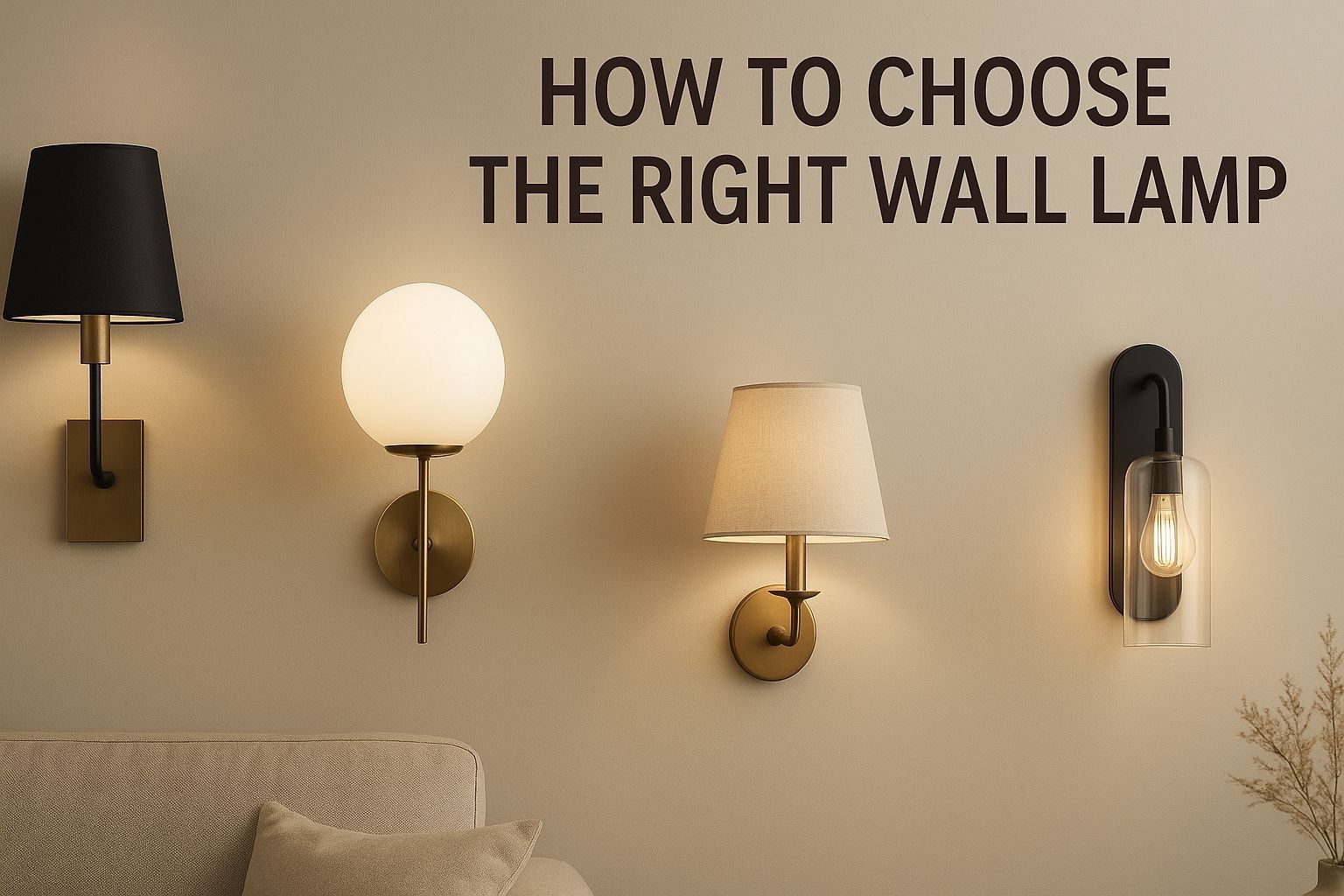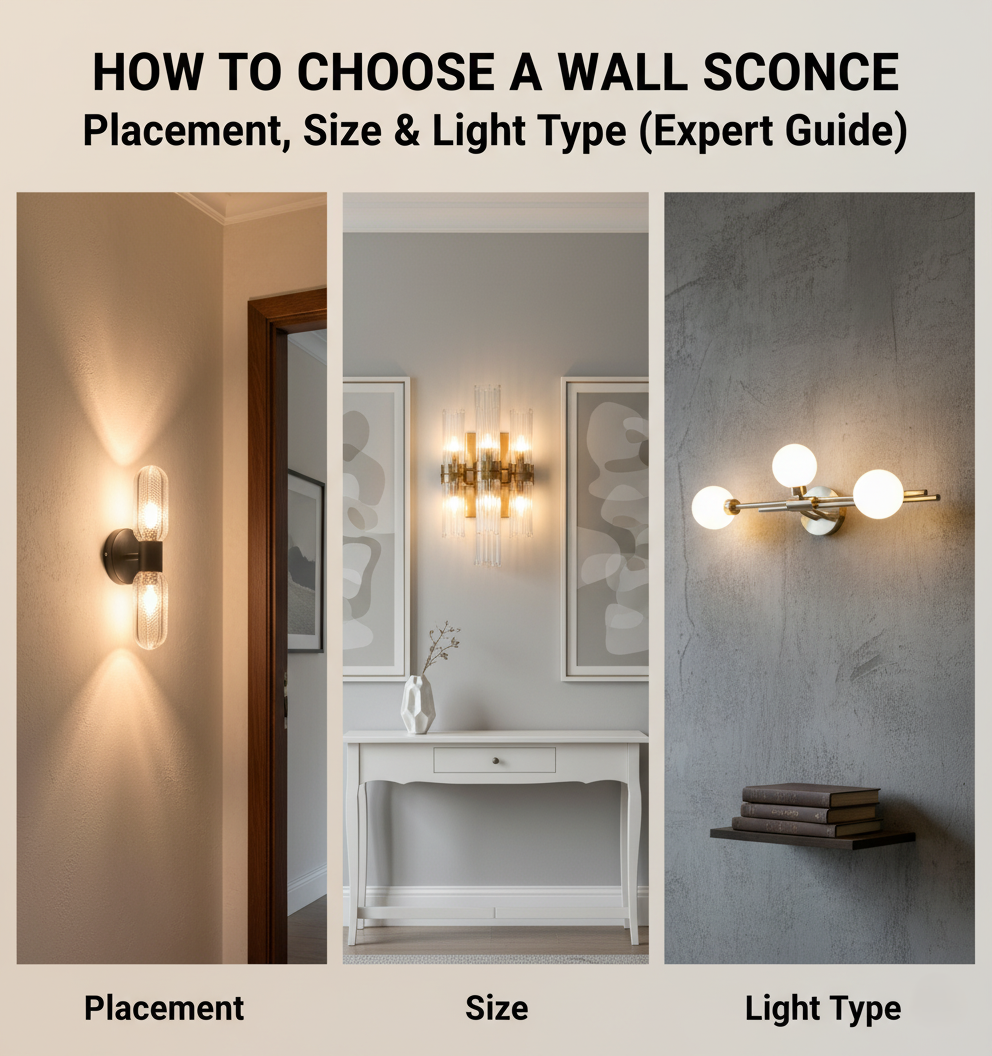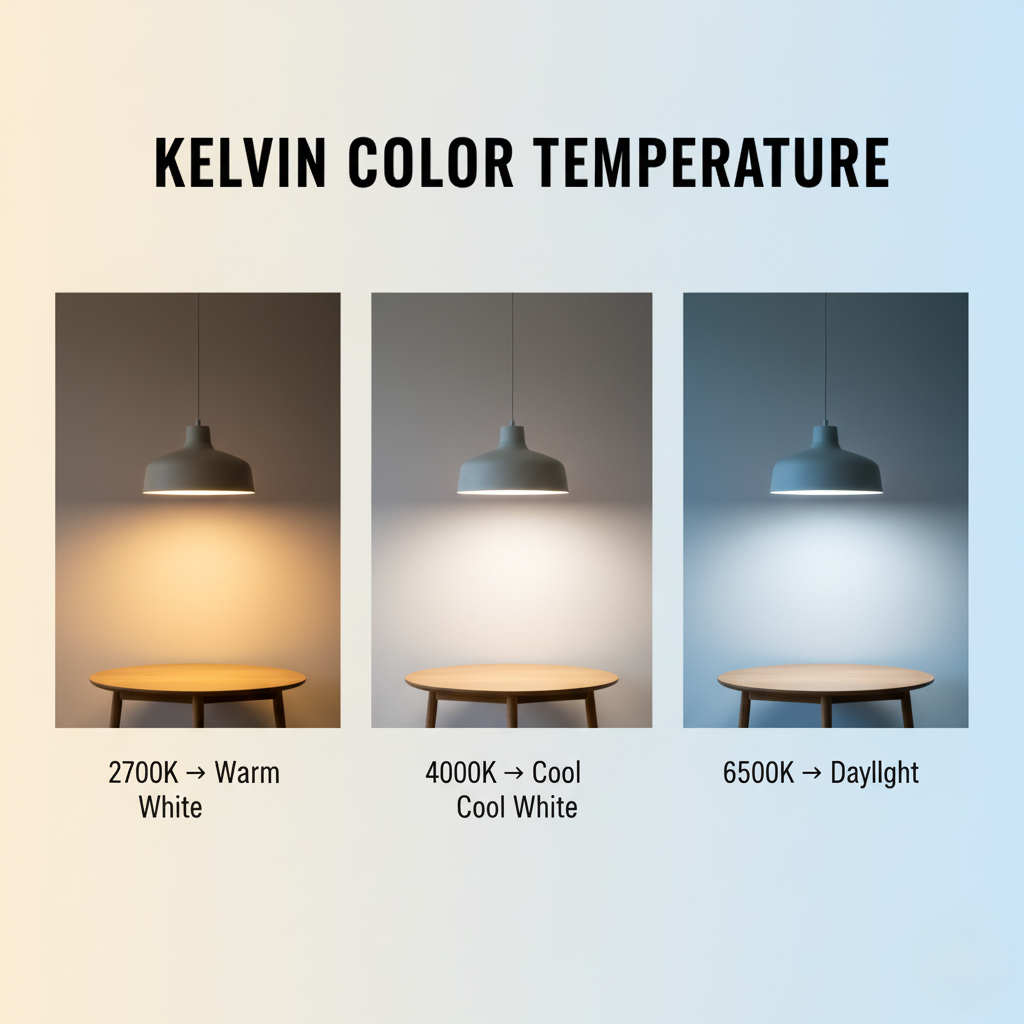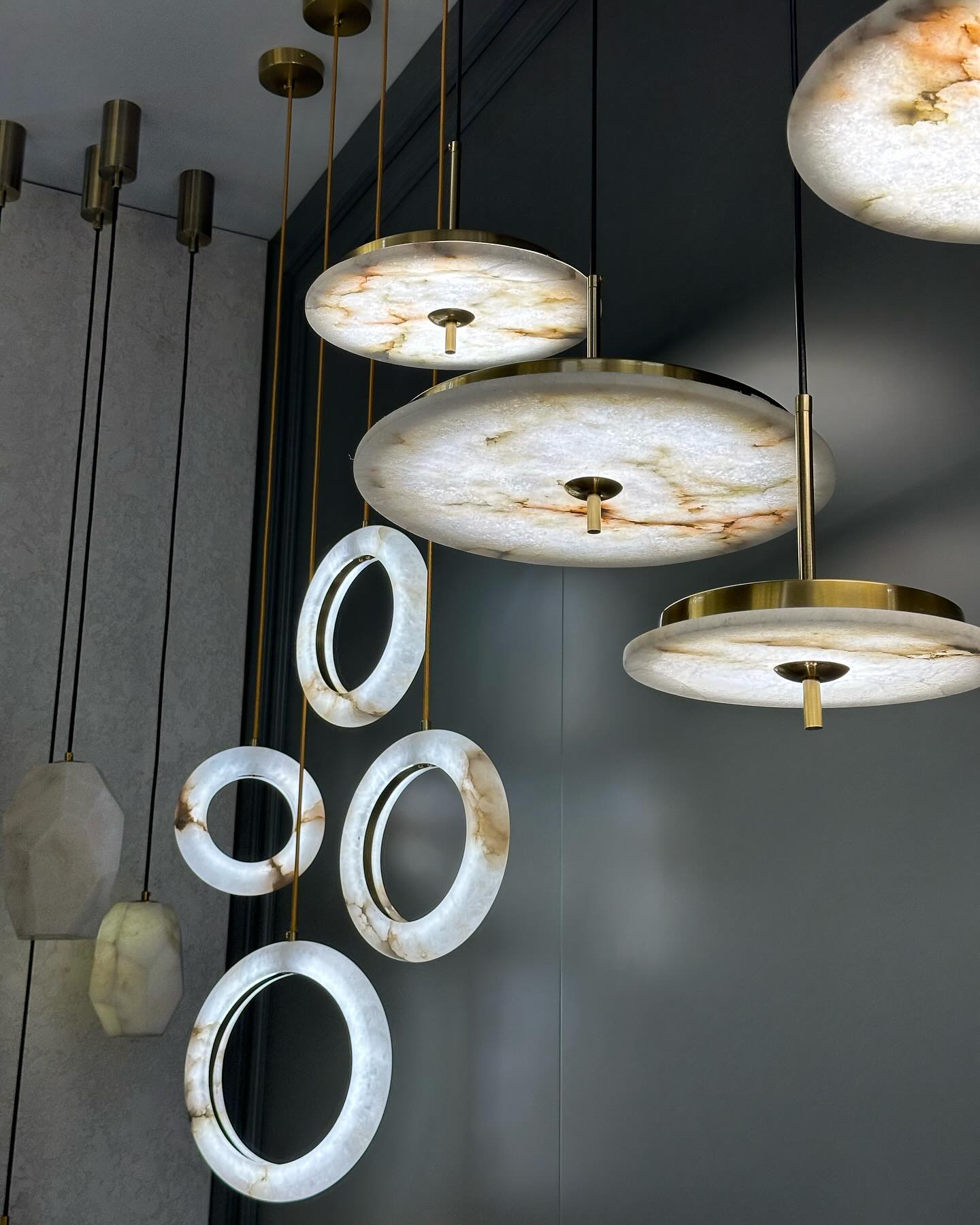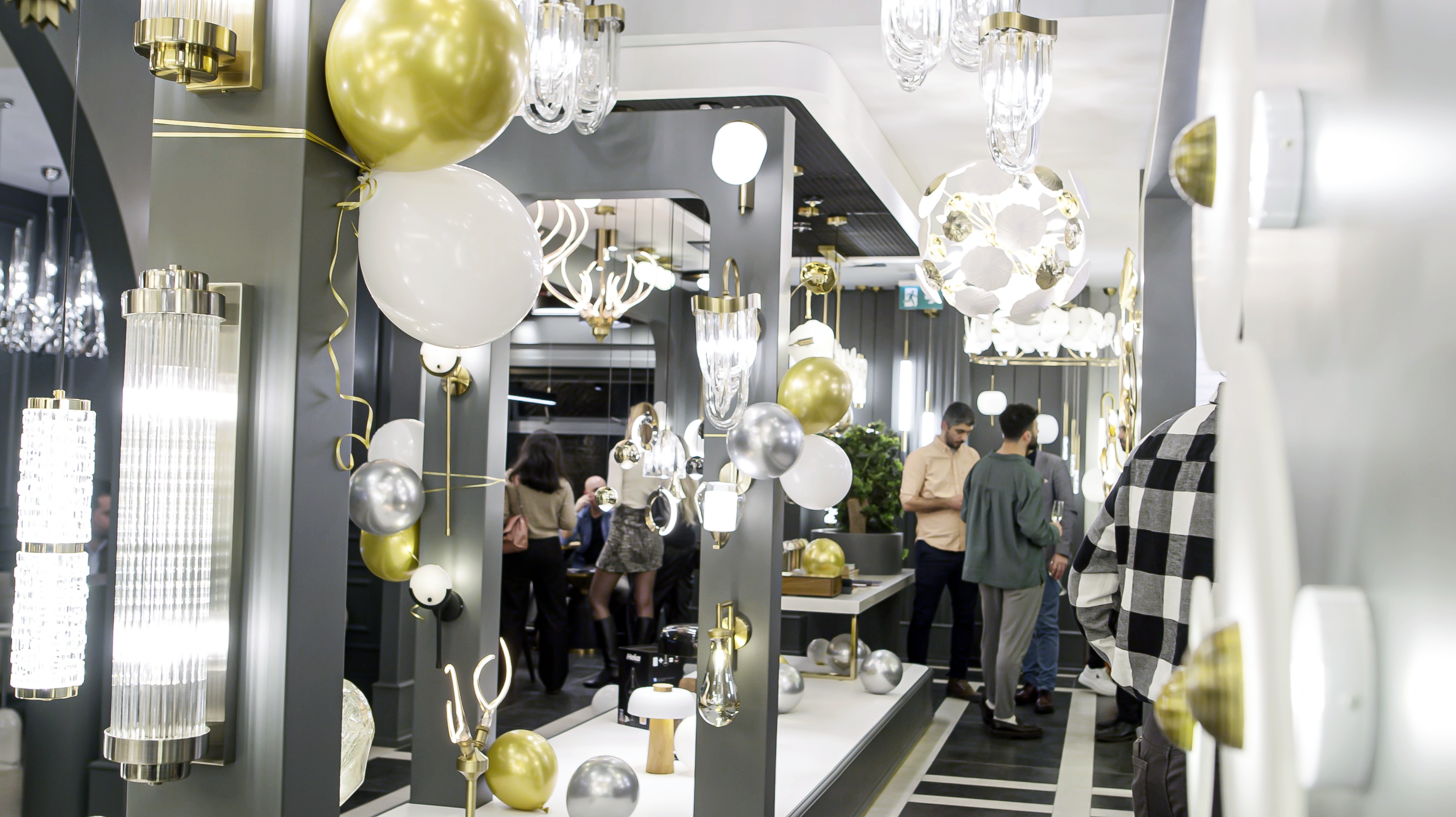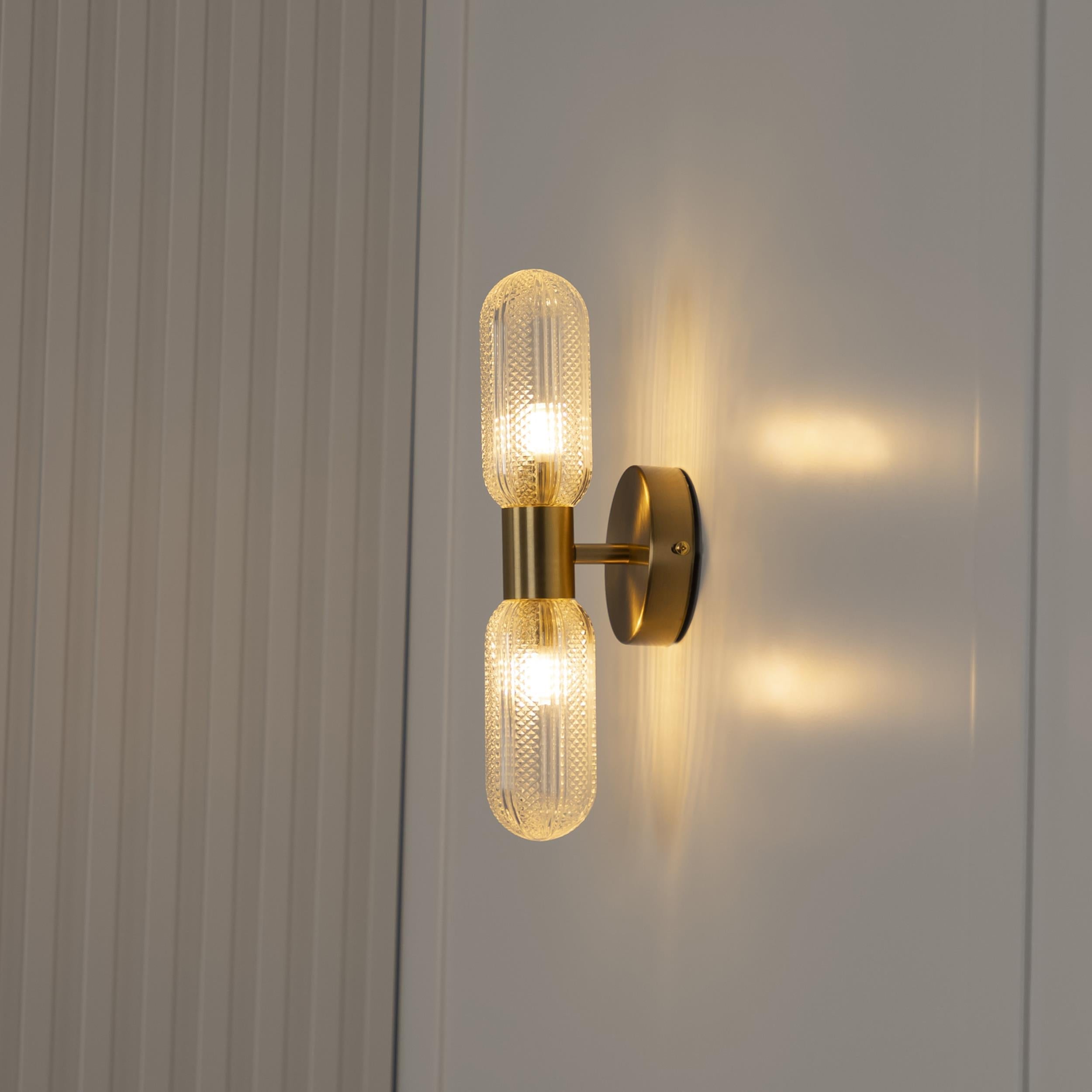What Does Kelvin Mean in Lighting?
When you shop for bulbs or light fixtures, you often see numbers like 2700K, 3000K, or 4000K written on the box.
Those numbers represent Kelvin (K) — the scale used to measure the color temperature of light.
In simple terms:
-
Lower Kelvin = warmer, softer, yellowish light
-
Higher Kelvin = cooler, bluish, daylight-like light
Kelvin doesn’t measure brightness (that’s lumens). Instead, it describes how warm or cool a light appears to the human eye.
The Kelvin Scale: Warm to Cool Light
Here’s a quick visual guide to understand color temperature:
| Kelvin Range | Light Appearance | Best For |
|---|---|---|
| < 2700K | Very Warm / Candlelight Amber | Restaurants, Cozy Corners |
| 2700K–3000K | Warm White | Living Rooms, Bedrooms |
| 3500K–4000K | Neutral White | Kitchens, Bathrooms, Offices |
| 4500K–6500K | Cool / Daylight | Workspaces, Studios, Hospitals |
🟡 Warm White (2700–3000K) feels cozy and welcoming.
⚪ Cool White (4000–5000K) feels bright and energetic.
🔵 Daylight (6500K) is crisp and clear, often used for task lighting.

Why Kelvin Matters in Interior Design
Color temperature can completely change how a room feels — and how people experience your space.
1. Mood and Atmosphere
Warm Kelvins create a relaxed, intimate atmosphere — perfect for bedrooms or lounges.
Cooler Kelvins bring clarity and focus — ideal for kitchens or studios.
2. Color Rendering
The perceived color of walls, fabrics, and furniture changes under different light temperatures.
For example, warm lighting can make beige tones appear richer, while cool lighting can make whites look cleaner.
3. Functionality
Different spaces have different needs:
-
Warm light for relaxing
-
Neutral light for balance
-
Cool light for productivity
Recommended Kelvin by Room
| Room Type | Recommended Kelvin | Lighting Effect |
|---|---|---|
| Bedroom / Living Room | 2700K–3000K | Cozy & relaxing |
| Dining Room | 2700K–3000K | Warm & inviting |
| Kitchen | 3000K–4000K | Clear & natural |
| Bathroom | 3500K–4000K | Clean & fresh |
| Office / Study | 4000K–5000K | Focused & energizing |
| Garage / Workshop | 5000K–6500K | Bright & functional |
💡 Tip: In open-plan areas, keep Kelvin consistent across connected spaces to avoid harsh contrasts.
Kelvin vs Brightness: What’s the Difference?
A common misconception:
“Higher Kelvin means brighter light.” ❌
That’s not true.
-
Brightness is measured in lumens (lm) — it shows how much light a bulb produces.
-
Kelvin only describes the color tone of that light.
You can have a 3000K bulb that’s brighter than a 6000K one, depending on lumens.
How Designers Use Kelvin to Shape Spaces
Professional lighting designers use Kelvin intentionally to build emotion and balance:
-
Warm Kelvin (2700K) → restaurants, boutique hotels, bedrooms
-
Neutral (3500–4000K) → retail shops, living rooms, kitchens
-
Cool (5000K+) → offices, galleries, showrooms
If you’re an architect or interior designer, choosing the right Kelvin helps you control not just visibility — but mood, texture, and depth.
Combining Different Kelvins (Layered Lighting)
You don’t have to stick to just one color temperature.
Layered lighting adds visual interest and functionality:
-
Ambient Lighting – Main, soft glow (warm white)
-
Task Lighting – Focused for work (cool white)
-
Accent Lighting – Highlights decor or artwork (any Kelvin)
This layered approach lets you control ambiance throughout the day.
Common Mistakes When Choosing Kelvin
❌ Mistake 1: Thinking Kelvin = Brightness
✅ Always check lumens for brightness, Kelvin for color tone.
❌ Mistake 2: Using 6000K in cozy areas
✅ Keep bedrooms and lounges around 2700–3000K for comfort.
❌ Mistake 3: Mixing too many temperatures in one space
✅ Maintain consistency in open areas (living room + kitchen).
Example from HEKA Lighting
Our decorative fixtures are available in multiple Kelvin options.
For instance:
-
Sümela Glass Wall Sconce – 2700K, 3000K or 6500K
-
Ottava Set Of 2 Transparent Wall Sconce – 2700K, 3000K or 6500K
-
Likya Soft Three Glass Wall Sconce – 2700K, 3000K or 6500K
Choosing the right Kelvin ensures your fixture complements both your interior palette and desired atmosphere.
FAQ — Quick Answers About Kelvin
Q1. What is the best Kelvin for a bedroom?
Use 2700K–3000K for a warm, cozy feel that promotes relaxation.
Q2. What Kelvin is closest to natural daylight?
Around 5000–6500K — bright white with a hint of blue, mimicking sunlight.
Q3. Is 4000K too bright for a living room?
It can feel slightly cool; choose 3000K if you prefer a softer, warmer atmosphere.
Q4. Does Kelvin affect energy consumption?
No — energy use depends on wattage, not color temperature.
Q5. Can I mix warm and cool lights in one space?
Yes, but do it purposefully — use warm for ambience and cool for task zones.
Final Thoughts
Understanding Kelvin in lighting is key to creating beautiful, comfortable, and functional interiors.
Once you start paying attention to color temperature, you’ll never look at light the same way again.
✨ Pro Tip: Choose fixtures with adjustable Kelvin (tunable white LEDs) for full control over ambiance from morning to night.
Shop Our Lighting Collections
Explore our curated collections designed for modern interiors:

